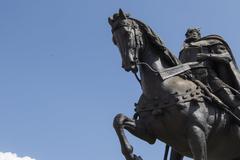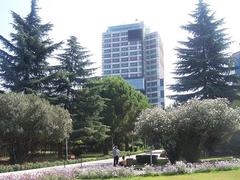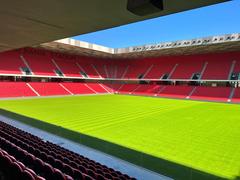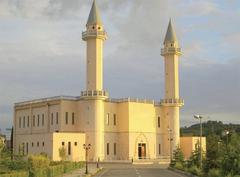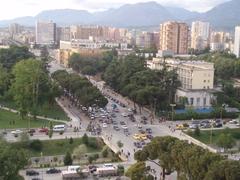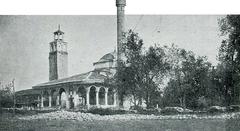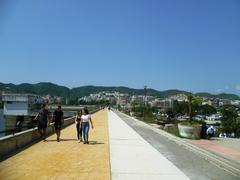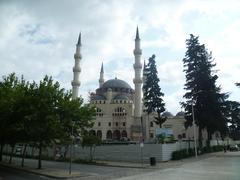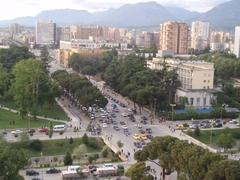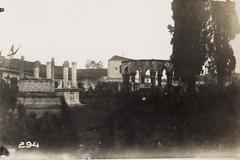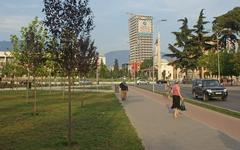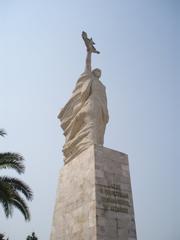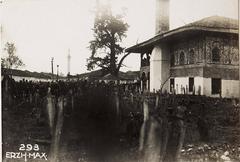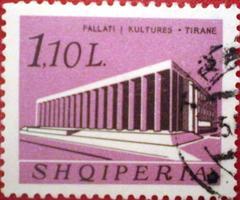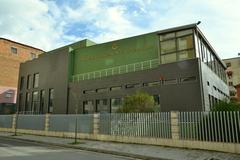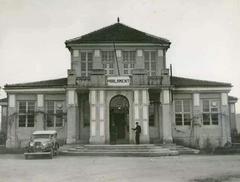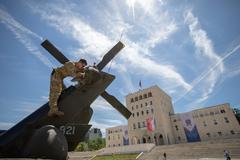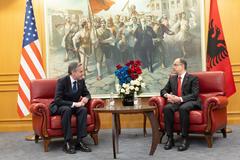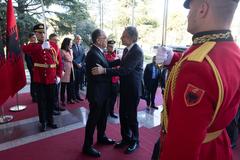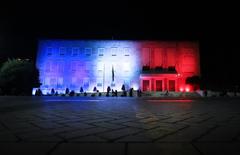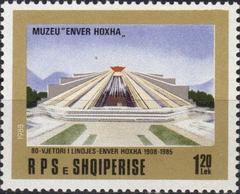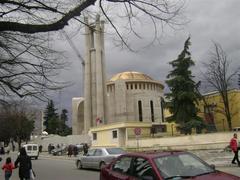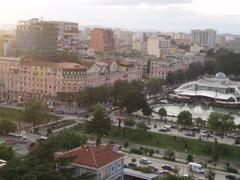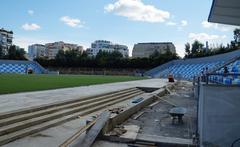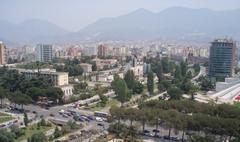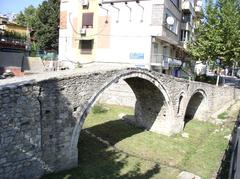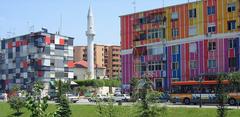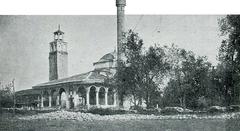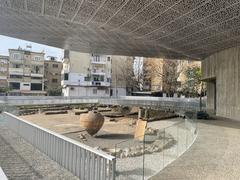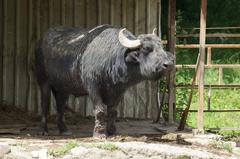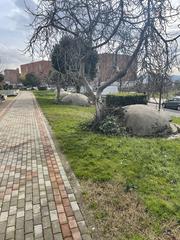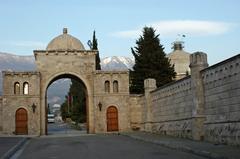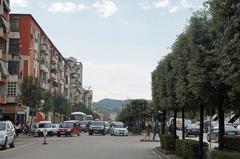
Skanderbeg Monument: Visiting Hours, Tickets, and Historical Sites in Tirana
Date: 14/06/2025
Introduction
Located at the very center of Tirana, Albania’s capital, the Skanderbeg Monument is both a national symbol and a gateway to the city’s layered history. Erected in 1968 to commemorate the 500th anniversary of Gjergj Kastrioti Skanderbeg’s death, this equestrian statue stands in Skanderbeg Square—a lively, pedestrian-friendly plaza surrounded by the city’s most significant cultural and historical landmarks. This guide offers a comprehensive overview of the monument’s historical and cultural significance, practical visitor information, and suggestions for exploring nearby attractions. Whether you are a history lover, a casual traveler, or simply exploring Tirana, the Skanderbeg Monument is an essential stop that encapsulates the Albanian spirit of resilience and unity (wikipedia.org; visit-tirana.com).
Table of Contents
- Origins and Evolution of Skanderbeg Square
- The Skanderbeg Monument: Creation and Symbolism
- Architectural and Urban Transformations
- Visitor Information: Hours, Tickets, Accessibility, and Tours
- Skanderbeg’s Enduring Legacy and Social Significance
- Nearby Attractions and Suggested Itinerary
- Frequently Asked Questions (FAQ)
- Practical Tips for Visitors
- Conclusion
- References
Origins and Evolution of Skanderbeg Square
Skanderbeg Square, known locally as Sheshi Skënderbej, is Tirana’s symbolic and geographical center. Its origins date to the early 20th century, evolving through Austro-Hungarian, Italian, and socialist influences as Albania’s capital developed. Initially home to the first parliament building in 1917, the square was transformed in the 1920s and 1930s with the construction of ministries and government offices in Italianate style (visit-tirana.com).
Throughout the communist era, the square was a stage for political rallies and featured statues of international socialist figures before the installation of the Skanderbeg Monument in 1968 (tirana.al). The square’s architecture and layout continued to evolve, reflecting the city’s changing identity. A major redesign in the 2010s transformed it into the largest pedestrian plaza in the Balkans, marked by distinctive paving stones from all Albanian regions and a pyramid-shaped layout symbolizing unity (tirana-guide.al).
The Skanderbeg Monument: Creation and Symbolism
The centerpiece of Skanderbeg Square is the 11-meter-high equestrian statue of Gjergj Kastrioti Skanderbeg, Albania’s national hero. Sculpted by Odhise Paskali, Janaq Paço, and Shaban Hadëri, the monument was inaugurated in 1968, marking the 500th anniversary of Skanderbeg’s death (wikipedia.org). Skanderbeg is depicted astride his horse, sword raised, embodying the spirit of Albanian resistance against Ottoman conquest in the 15th century.
This monument is more than a work of art; it is a declaration of national pride, resilience, and unity, visible from every corner of the square. Its central placement underlines Skanderbeg’s enduring role as a unifying figure in Albanian identity (balkankaleidoscope.com).
Architectural and Urban Transformations
Skanderbeg Square’s architectural tapestry reflects Albania’s complex history. Key landmarks surrounding the square include:
- National History Museum: Featuring a prominent mural mosaic of Albanian history (Krista the Explorer).
- Et’hem Bey Mosque: An 18th-century mosque renowned for its unique frescoes.
- Clock Tower (Kulla e Sahatit): Built in 1822, offering panoramic city views.
- Palace of Culture: Home to the National Opera and Ballet Theatre.
- National Gallery of Arts: Showcasing national artistic heritage.
- Bunk’Art 2: A museum dedicated to Albania’s communist past.
A major redesign completed in 2017 expanded the square to nearly 40,000 square meters, introduced over 100 water fountains, and increased greenery with trees and plants from across the country (tirana-guide.al). The square’s open design, geometric paving, and public amenities invite both locals and visitors to gather, relax, and celebrate.
Visitor Information: Hours, Tickets, Accessibility, and Tours
Visiting Hours:
Skanderbeg Square and the Skanderbeg Monument are open to the public 24/7, year-round. There is no entrance fee to visit the square or view the monument (albaniafaq.com).
Nearby Attractions:
- National History Museum: Typically open 9:00 AM–5:00 PM; entry fee applies.
- Clock Tower: Small admission fee (approx. 200 ALL).
- Et’hem Bey Mosque: Free entry; donations welcomed.
Accessibility:
The square is fully pedestrianized and wheelchair accessible, with wide, flat surfaces and ramps. Underground parking is available for 300 cars.
Guided Tours:
Numerous local tour operators offer walking tours starting from Skanderbeg Square. Tours often include the monument, museum, mosque, and other key sites, providing historical context and insider stories (roughguides.com).
Best Times to Visit:
Spring (April–June) and autumn (September–October) offer pleasant weather and fewer crowds. Evenings are lively, with the monument and square beautifully illuminated.
Skanderbeg’s Enduring Legacy and Social Significance
The Skanderbeg Monument is not only a historical artifact but also a living symbol of Albania’s national identity. Skanderbeg’s 25-year resistance against the Ottoman Empire is celebrated annually and his legacy is woven into national holidays, educational curricula, and cultural events (whattodoinalbania.com). The monument’s location, previously occupied by statues of Stalin and Enver Hoxha, reflects Albania’s journey from foreign domination and totalitarianism to independence and democracy (thecrazytourist.com).
The square hosts major events, public gatherings, concerts, and festivals, serving as the focal point for civic life in Tirana. It remains a site for peaceful protests, artistic performances, and national celebrations—including Independence Day and Skanderbeg Day (visit-tirana.com).
Nearby Attractions and Suggested Itinerary
Within a short walk of the Skanderbeg Monument, visitors can explore:
- National History Museum: Exhibits on Skanderbeg and Albanian history (whattodoinalbania.com).
- Et’hem Bey Mosque: Renowned for its frescoes and historical significance (chasingthedonkey.com).
- Clock Tower: Iconic city views from its 35-meter-high observation deck.
- Palace of Culture: The National Library and Opera/Ballet Theatre.
- Bunk’Art 2: A museum in a former nuclear bunker (roughguides.com).
- New Bazaar (Pazari i Ri): Market for local produce and crafts.
- Blloku District: Trendy neighborhood known for dining and nightlife (Traveling Season).
Suggested Itinerary:
Spend 1–2 hours exploring Skanderbeg Square, the monument, and nearby landmarks, followed by a coffee at a local café. Combine your visit with a walking tour for historical context (touristplaces.guide).
Frequently Asked Questions (FAQ)
Q: What are the visiting hours of Skanderbeg Square and the monument?
A: Both are open 24/7, year-round, with no entrance fee.
Q: Do I need a ticket to visit the monument?
A: No, access is free.
Q: Are guided tours available?
A: Yes, many guided walking tours begin at Skanderbeg Square.
Q: Is the site accessible for visitors with disabilities?
A: Yes, the square and monument area are wheelchair accessible.
Q: What is the best time to visit?
A: Spring and autumn for comfortable weather; early mornings and late afternoons for optimal lighting.
Practical Tips for Visitors
- Safety: Tirana’s city center is generally safe. Exercise standard precautions, especially during crowded events.
- Facilities: Public restrooms are available in the National History Museum and nearby cafés. Free Wi-Fi is available in the square.
- Drinking Water: Bottled water is recommended; widely available nearby.
- Currency: Albanian lek (ALL). Carry some cash for small purchases; ATMs are available.
- Dress Code: No specific requirements for the square; modest attire for mosque visits.
- Souvenirs: Local vendors near the square sell crafts and mementos (chasingthedonkey.com).
- Tourist Information: An office is located just north of the square for advice and free resources (albaniafaq.com).
Conclusion
The Skanderbeg Monument and its surrounding square are the beating heart of Tirana—an open-air museum, a cultural gathering place, and a proud symbol of Albania’s journey through adversity and triumph. Open to all, day or night, the monument invites contemplation and celebration, connecting the country’s storied past with its vibrant present.
For the best experience, visit during spring or autumn, explore the adjacent museums and historical sites, and consider joining a guided tour. Don’t forget to download the Audiala app for personalized recommendations and live updates on events in Tirana. Share your experiences and immerse yourself in the living history of Albania’s capital.
References and Further Reading
- Skanderbeg Square in Tirana: History, Visitor Information, and Tips for Exploring a Top Albanian Landmark (visit-tirana.com)
- Skanderbeg Monument (wikipedia.org)
- Skanderbeg Square Visiting Hours, Tickets, and Top Historical Sites in Tirana (Krista the Explorer)
- Skanderbeg Monument in Tirana: Visiting Hours, History, and Cultural Significance (roughguides.com)
- Skanderbeg Monument Visiting Hours and Practical Guide in Tirana (albaniafaq.com)
- Skanderbeg Square and Skanderbeg Monument (tirana.al)
- Exploring Skanderbeg Square – The Heart of Tirana (tirana-guide.al)
- Bunk’Art 2 Museum (chasingthedonkey.com)
- What to do in Albania: Skanderbeg and his Historical Sites (whattodoinalbania.com)
- Top Tourist Attractions in Tirana (touristplaces.guide)
- Tirana Travel Guide (albaniavisit.com)
- What to visit and do in Tirana (travelingseason.com)
